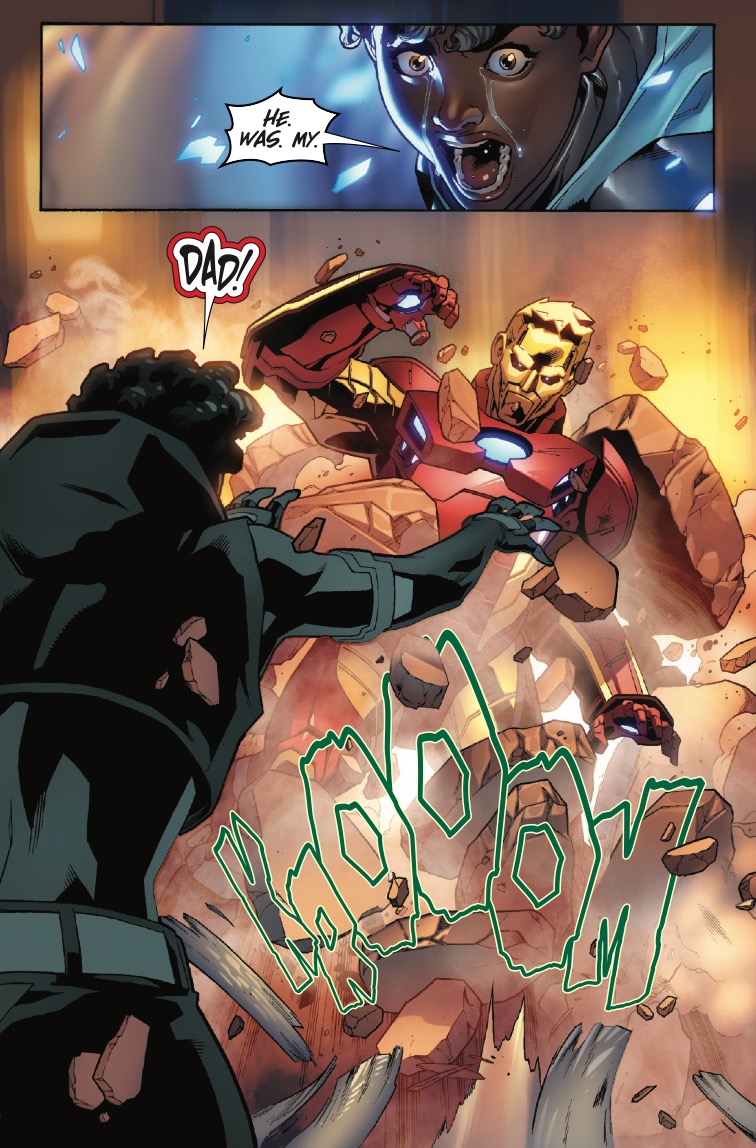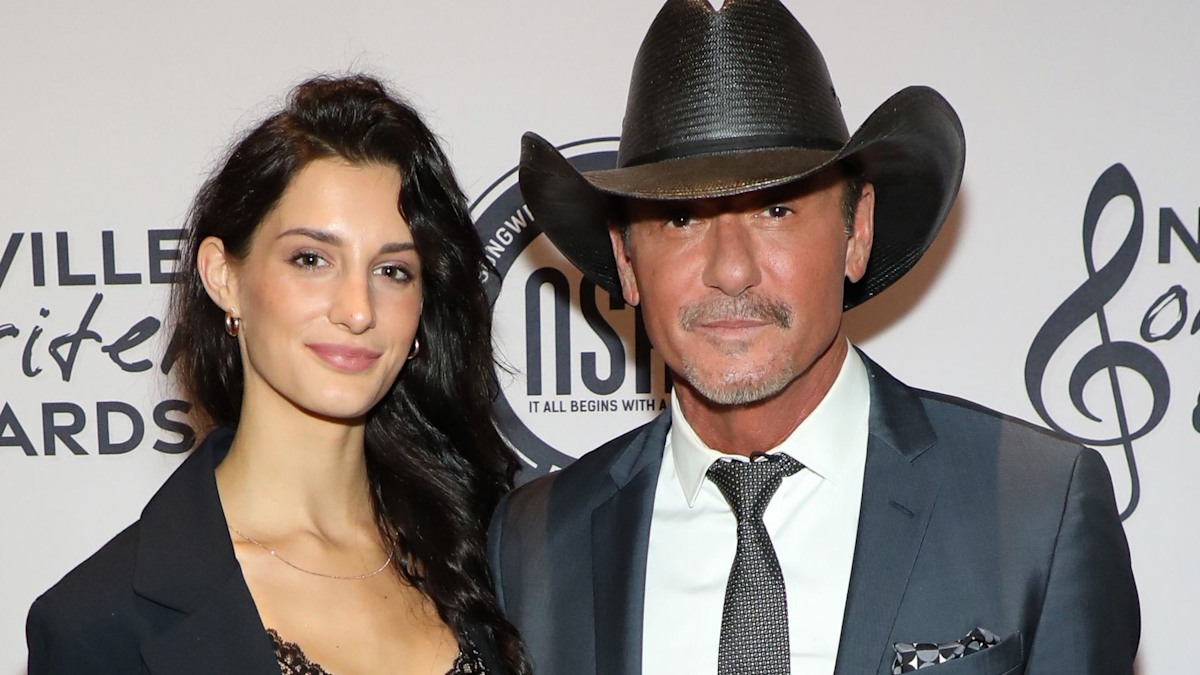Crime films have long been a cornerstone of cinema, offering viewers a gritty lens to explore violence, corruption, morality and the human condition. Characters in crime films are often complex; the distinction between heroes and villains isn’t always inherently clear and there’s often a seductive element to even the most vile characters that oftentimes makes it easier to root for them. The best entries in this genre don’t just entertain us, they provoke, unsettle and linger in our minds long after the credits roll.
Films like Silence of the Lambs provide a protagonist that’s easy to root for, like Jodie Foster’s rookie FBI agent, Clarice Starling, while the gripping realism of Heat places audiences directly in the shoes of criminals like Robert De Niro’s Neil McCauley. Other films like Pulp Fiction subvert the genre and offer an entirely new way of experiencing it. From tightly paced heists to unnerving psychological thrillers, this list explores crime films that can rightfully be called masterpieces.
10
‘Double Indemnity’ (1944)
Directed by Billy Wilder
Billy Wilder’s Double Indemnity is a film noir crime drama, based on the James Cain novel of the same name. Double Indemnity follows the story of insurance agent Walter Neff (Fred MacMurray) who falls for a wealthy woman named Phyliss Dietrichson (Barbara Stanwyck) and helps execute a plot to kill her husband and collect on the insurance money. Double Indemnity set the standard for film noir, an essential subgenre of crime films.
Double Indemnity is a tightly written thrill ride that keeps audiences immersed in the storyline from beginning to end. The best example of the films’ impeccable writing occurs during Walter and Phyliss’s initial encounter at her opulent California manor. The steamy chemistry between the two sizzles as they engage in rapid-fire dialogue with flirty overtones and witty innuendos. The blocking subtly changes to deliberately draw attention to the shifting power dynamics between the two. The camerawork is slow-moving and patient. It maintains focus on the leads without ever drawing too much attention to itself. Conservative by today’s standards, Double Indemnity was a strikingly provocative film upon its release, and its morally gray characters, its striking use of shadows, and the inclusion of a femme fatale made it one of the earliest and most influential examples of film noir within the broader crime genre. Double Indemnity remains a crime masterpiece, and one of the greatest collaborations between Wilder and Charles Brackett.
9
‘Silence of the Lambs’ (1991)
Directed by Jonathan Demme
Jonathan Demme’s The Silence of the Lambs is a psychological crime thriller based on Thomas Harris’s novel of the same name. It follows Clarice Starling, a young and promising FBI trainee who searches for the dangerous and elusive Buffalo Bill (Ted Levine), a brutal serial killer who kidnaps and skins women. To aid in her search, Clarice seeks advice from Hannibal Lecter (Anthony Hopkins) a brilliant former psychologist imprisoned for killing and eating his victims. Silence of the Lambs was a critical and commercial success upon its release and took home five Oscars, including: Best Picture, Best Director, Best Actor and Best Actress.
Silence of the Lambs is often talked about as one of the greatest horror films, but it’s also a crime film masterpiece. Demme’s focused direction does a phenomenal job of depicting the nerve-wracking experience Clarice endures as a rookie bureau agent by often pointing the camera directly at the faces of the people she speaks to, forcing viewers to identify with her character. In preparation for his role, Hopkins combed through serial killer files, visited prisons and studied murderers and was even present during court hearings involving brutal murders. Hopkins took home an Oscar for his performance as one of the greatest movie villains, despite appearing on-screen for only 16 minutes. As Clarice’s search continues, the pacing of The Silence of the Lambs continually builds towards its heart-racing climax at a sweat-inducing rate, leading up to her final showdown with the barbarous Buffalo Bill, portrayed by Ted Levine. Silence of the Lambs offers a realistic portrayal of the task force dedicated to catch Bill, and this veracity can be credited to the FBI’s real-life Behavioral Science Unit, who assisted in the making of the film. As a film that effortlessly blends the horror, thriller, and crime genres into one tour-de-force, Silence of the Lambs is a must-see.

The Silence of the Lambs
- Run Time
-
1 hr 58 min
- Director
-
Jonathan Demme
- Release Date
-
February 14, 1991
8
‘Fargo’ (1996)
Directed by Joel and Ethan Coen
Joel and Ethan Coen’s Fargo follows the story of Marge Gunderson (Frances McDormand), a Minnesota police chief, who investigates a triple homicide that occurs after a middling car salesman (William H. Macy) hires two equally middling criminals (Steve Buscemi and Peter Stormare) to kidnap his wife so they can squeeze his father-in-law for a hefty ransom. Fargo’s one of the greatest 90s films, and it also spawned one of the best television anthology series of all time.
Fargo seamlessly blends hilarity with dark themes; this is by virtue of its incredible writing and the memorable performances of its ensemble cast. McDormand gives one of the best Coen film performances as Marge, whose affable politeness scarcely conceals her astute detective skills. She’s like an inversion of the prototypical film cop; she’s polite, well-mannered, well-adjusted, doesn’t seem to be tortured by her job, and she’s, well, pretty wholesome. Marge’s warm characterization sharpens the contrast between her and the cold-blooded villains she chases. The film’s cinematography reinforces this contrast with memorable shots of harsh snowy landscapes that are fantastically juxtaposed against Marge, whose warm personality is the heart and engine of the entire film. Macy’s performance as the panicky car salesman behind the disaster that gets everyone killed is equally impressive, as he conveys trembling discomfort in every scene he’s in. Fargo is a Coen classic, and a crime masterpiece that assumes a unique tone for the genre.

Fargo
- Release Date
-
April 5, 1996
- Runtime
-
98 Minutes
7
‘City of God’ (2002)
Directed by Fernando Meirelles and Kátia Lund
City of God is a Brazilian epic crime film adapted from the autobiographical novel of the same name by Paulo Lins. This gripping story depicts the rise of organized crime in the Cidade de Deus suburb of Brazil from the late 1960s to the early 1980s. The story is told from the perspective of Rocket (Alexandre Rodrigues), an aspiring photographer and resident of the favela who struggles to navigate its chaotic environment amid a series of events that culminate in a war between drug dealer Li’l Zé (Leandro Firmino) and vigilante-turned-criminal Knockout Ned (Seu Jorge).
City of God churns with ferocious intensity and unrelenting force during its runtime, seldom offering viewers a moment to breathe. This explosive and beautifully rendered film is a gripping masterpiece that grabs viewers by the throat and refuses to let go. César Charlone’s cinematography vividly captures the vibrancy of the Brazilian favela, and conjures a spectacle of images that are visually arresting. The action sequences in City of God include jaw-dropping shootouts and chases that are guaranteed to keep viewers at the edge of their seat in rapt amazement. Few films are able to maintain such a frenetic pace from beginning to end without exhausting their viewers, but City of God manages to do just that. It’s worth noting that the only professional actor in the film was Matheus Nachtergaele; the cast consisted of residents from real-life favelas and, in some cases, from the actual City of God favela. With its gritty style, compelling narrative, and explosive action sequences, City of God is a crime film masterpiece, and one of the greatest international films of all time.

City of God
- Release Date
-
February 13, 2004
- Runtime
-
130 Minutes
6
‘Scarface’ (1983)
Directed by Brian De Palma
Scarface is Brian De Palma’s remake of the 1932 film, which was based on the novel of the same name by Armitage Trail. It tells the story of Tony Montana (Al Pacino), an ambitious ex-convict who travels from Cuba to Miami in 1981 and ascends to power as a ruthless drug lord alongside his partner and friend Manny Ribera (Steven Bauer). Scarface was a highly polarizing film upon its release and was panned by several critics for its excessive violence and profanity, but over the years it’s become one of the most iconic cult classics in cinema.
De Palma’s Scarface is a cocaine-fueled carnival of violence that features Pacino at his most unhinged. De Palma employs an operatic directing style that vividly depicts Montana’s rise to power with glamor and unrelenting intensity. It’s an engrossing film that manages to be both thrilling and highly repellent at the same time. Violent scenes, like the chainsaw execution and the final shootout at Tony’s decadent mansion, are among the most brutal and unforgettable in film. At the time of its release, viewers were so shocked at the imagery that some of them reportedly walked out, including legendary writer Kurt Vonnegut. While its gruesomeness was initially highly criticized, Scarface is considered a cult-classic, and is among De Palma’s most well-known works. The adrenaline-filled narrative, the 80s Miami aesthetic, and the quotable dialogue come together to deliver one of the most iconic modern masterpieces of cinema.

Scarface
- Release Date
-
December 9, 1983
- Runtime
-
170 minutes
5
‘Pulp Fiction’ (1994)
Directed by Quentin Tarantino
Quentin Tarantino’s film debut, Pulp Fiction, features three interconnected stories occurring in non-chronological order: a couple (Tim Roth and Amanda Plummer) stick-up a diner; two hit-men (Samuel L. Jackson and John Travolta) are tasked with retrieving a suitcase for their boss (Ving Rhames); and a prizefighter attempts to flee after double-crossing his boss (Rhames). Pulp Fiction was a critical and commercial success upon its release and is considered by many to be Tarantino’s magnum opus.
Pulp Fiction is a stylized crime masterpiece that turned the genre on its head and cemented Tarantino’s status as one of cinema’s most preeminent voices. Its unconventional structure, use of homage and pastiche, as well as its plethora of pop-culture references defined it as a touchstone of postmodern film and distinguished it from the crime films of the past. The ensemble cast delivered some of the most memorable performances in film history; Jackson’s portrayal as the righteous and fiery Jules made him a household name, while Travolta’s role as Vincent gave him the career comeback of a lifetime. Uma Thurman’s performance as the dark-haired enigmatic beauty, Mia Wallace, was also a career-defining role for her. The film’s self-reflexive script includes some of the most striking and razor-sharp dialogue in film history. Pulp Fiction is an outstanding film that rewards multiple viewings, and it’s an essential 90s movie.

Pulp Fiction
- Release Date
-
October 14, 1994
- Runtime
-
154 minutes
4
‘Chinatown’ (1974)
Directed by Roman Polanski
Chinatown is a classic neo-noir mystery crime film that follows private investigator J.J. “Jack” Gittes (Jack Nicholson), whose investigation into the affair (and later death) of the chief engineer at the Department of Water and Power leads him to uncover a scandalous conspiracy involving the Los Angeles water supply and a massive land grab of the Northwest Valley. Chinatown is an essential New Hollywood film that received widespread critical acclaim for its direction, cinematography, and the performances of Faye Dunaway and Nicholson.
Chinatown is a beautifully shot, gripping story that pulls audiences deeper into its mystery with every passing moment. The story continually escalates with every new clue and has no predictable plot twists. Nicholson and Dunaway are at the height of their powers in what are two of the best performances of their careers: Nicholson’s portrayal of a P.I. determined to find answers to an increasingly convoluted case features him in a gritty and slightly more understated acting style as opposed to some of his more theatrical performances; Dunaway conceals the distress of her character right beneath the surface in a manner that makes the revelation about her character’s tragic backstory all the more agonizing and authentic. Similar to Pulp Fiction, it examines the criminal underbelly of Los Angeles, albeit with a more serious and haunting tone. Chinatown is an expertly crafted crime film that’s as beautiful as it is gutting.

Chinatown
- Release Date
-
June 20, 1974
- Runtime
-
130 minutes
3
‘High and Low’ (1963)
Directed by Akira Kurosawa
Akira Kurosawa’s mastery of cinema is on full display with 1963’s High and Low. This gripping story is based on the 1959 novel, King’s Ransom by Evan Hunter, and follows the story of a businessman Kingo Gondo (Toshiro Mifune), who’s fighting for control of the shoe company he’s a board member of. Kingo’s plans for a leveraged buyout of the company using his life savings are complicated when his chauffeur’s son is mistakenly kidnapped to ransom him for 30 million yen.
In High and Low, Kurosawa uses meticulous shot composition and tonal control to turn the story of a kidnapping into a profound moral and class commentary. Mifune gives a stunningly coiled performance as Gondo, a wealthy executive whose inner conflict is brilliantly framed with stark precision in high-contrast interior shots that illustrate his sense of psychological isolation. In High and Low the use of space, long takes, and deep focus are brilliantly exercised to keep viewers locked into the rising tension of the story while emphasizing the contrast between the nouveau riche living conditions Gondo enjoys in his hilltop home and the poverty-stricken shanty town of Yokohoma which it overlooks. High and Low is Kurosawa at the top of his game, and it’s one of his best 1960s films.

High And Low
- Release Date
-
March 1, 1963
- Runtime
-
143 Minutes
- Director
-
Akira Kurosawa
- Writers
-
Ryûzô Kikushima, Hideo Oguni, Eijirô Hisaita, Akira Kurosawa
2
‘The Godfather’ (1972)
Directed by Francis Ford Coppola
The Godfather changed the world of cinema when it premiered in 1972. Francis Ford Coppola’s family chronicle tells the story of the Corleone family, which is headed by its sagacious patriarch, Vito Corleone (Marlon Brando). When a botched assassination attempt nearly kills Vito, his children are forced to take action against the perpetrators and their co-conspirators, leading to an all-out gang war. Vito’s youngest son, Michael, rises to the occasion and transforms from a former veteran into the Don’s unexpected icy heir to the throne in what’s largely considered Pacino’s greatest performance of all time.
Coppola took the crime genre to entirely new heights with The Godfather’s rich storytelling and layered characters. The film plays out like a Shakespearean drama as we witness the tragic circumstances that force Michael to step into his father’s shoes; Fredo’s (John Cazale) incompetence, Sonny’s tragic demise, and Vito’s incapacitation unfold in a series of events that bring Michael closer and closer to his ultimate destiny. Pacino’s transformational performance from the quiet and reserved youn veteran into a cold, calculating boss is one of the most impressive feats of acting in film. Brando’s iconic performance as Vito remains one of the most quoted and unforgettable characters ever. The Godfather’s rich narrative is supported by a gorgeous score by Italian composer Nino Rota. This thematically rich film is arguably the greatest American film of all time, and with good reason too.
1
‘Goodfellas’ (1990)
Directed by Martin Scorsese
Martin Scorsese’s Goodfellas blew audiences away with a captivating narrative that follows the life of mobster-turned-informant Henry Hill (Ray Liotta). The film, which is adapted from Nicholas Pileggi’s non-fiction book Wiseguy, follows Henry from the early days of his childhood, when he first picks up work for local mobsters, and later into his adult years as a fully-fledged gangster and associate of the Lucchese Family. Hill’s various crimes and exploits are committed alongside his accomplices, Tommy Devito (Joe Pesci), a trigger-happy psychopath, and the charismatic but ruthless Jimmy Conway (De Niro).
Scorsese wanted Goodfellas to start off like a gunshot, and then to continue picking up speed until the last minute. In his words, he wanted it to feel like a “two-and-a-half-hour trailer”. That’s precisely what he did. Goodfellas is a relentless film that throws you smack into the middle of its chaotic narrative and keeps an intensifying pace from start to finish. The film’s dark opening features the three main characters driving with an almost-corpse in the back of their car before pulling over to finish the job in one of cinema history’s most brutal opening sequences. Goodfellas immerses you in the fast-paced, violent underworld of the mob, and Hill guides us along as we witness its glamor, luxury, and wanton violence. The audience is seduced by the mafia lifestyle, just like Hill is, and is ultimately shocked when they witness the jarring demise of each character. For a director who is known for legendary crime films, Goodfellas is arguably Scorsese’s ultimate masterpiece and his greatest contribution to the genre.

Goodfellas
- Release Date
-
September 19, 1990
- Runtime
-
145 minutes
























![‘Our Hero, Balthazar’ Thwarts a Would-Be School Shooter in First Images For Wild Satire Starring Noah Centineo and Asa Butterfield [Exclusive] ‘Our Hero, Balthazar’ Thwarts a Would-Be School Shooter in First Images For Wild Satire Starring Noah Centineo and Asa Butterfield [Exclusive]](https://static1.colliderimages.com/wordpress/wp-content/uploads/2025/06/untitled-design-70.jpg)




